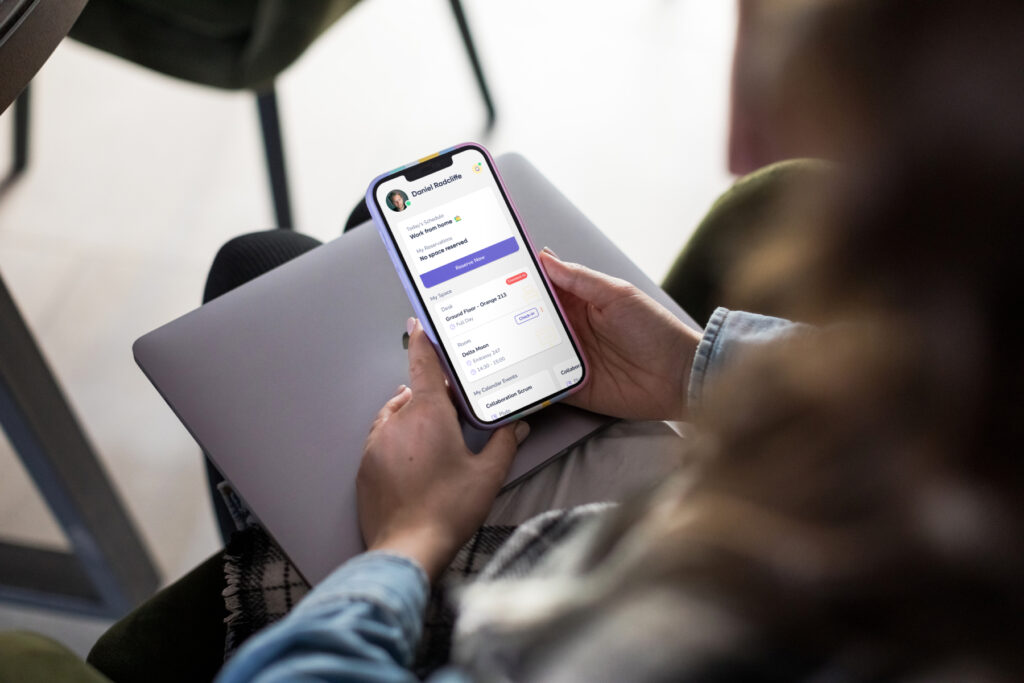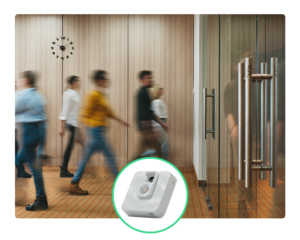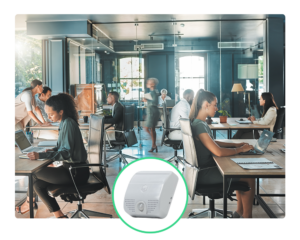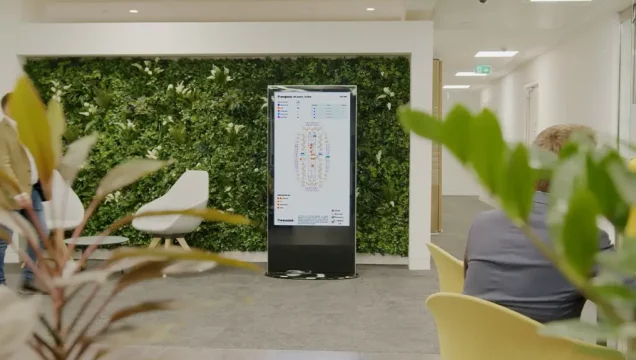

If badge data isn’t enough to manage real estate, what are the alternatives?
Many organisations are faced with complex decisions regarding their corporate real estate due to significant changes in the ‘work model’. Hybrid working has not only decreased the numbers attending the office, but the way in which employees interact and use the workspace has changed. Currently, according to IDC Info brief Sponsored by Freespace, Right Sizing Real Estate, Engaging Employees, and Lowering Carbon Footprint, Doc #EUR150553823, April (2023), 1 in 3 organisations are redefining the workplace; they recognise the need to change. However, they don’t have the insights and data to make informed decisions.
According to a study by CBRE, 70% of respondents are using more than one method to track space utilisation and make decisions, up from 59% in 2021 (CBRE, 2022-2023 CBRE Global Workplace & Occupancy Insights).
A number of these methods are explored further in this blog.
Access Control ‘Badge’ Data
Organisations have typically used data from the access control system to understand the total count of people accessing the building every day. This data is readily available as most organisations require employees to scan into the building on arrival. However, there are several limitations of this approach, including:
Lack of Occupancy Insight: The access control data provides information on attendance (i.e., the total number of people in the office on a particular day), but not occupancy (i.e., people occupying a space at the same time).
Lack of Space Utilisation Insight: Badge data won’t provide any detail on which spaces are in demand, how long each space type is utilised, and how many people. Ultimately badge data won’t enable organisations to redesign their space based on their employee and business needs.
Inaccuracy: In its basic form badge data relies on people scanning into a building, floor, or particular space. This in itself has inherent problems with people not enforcing security protocols (i.e., holding doors for others to enter) and the majority of organisations don’t have sufficient controls to enforce security policies. Additionally, employees generally aren’t required to scan out of the building, therefore no data is collected for the length of time in the building and the times people leave.
Although badge data is a convenient and cost-effective way to collect attendance data, it falls short in providing organisations with insights to make informed decisions about their office layout and space management. When discussing with clients and prospects, estimates indicate that there is a data gap of at least 20% in badging data due to instances such as people not badging in or tailgating. A 20% error in your office space strategy can be a very costly gap.
Booking App data
Many organisations are using a space booking app to understand space demand and reservations. This is a positive advance in using badge data and if used correctly can provide insights into ensuring the right size and design of office space. The following are things to consider when selecting an app:

- In-house Vs Proven Tool: Many organisations consider the development of their own booking app. Whilst the capability to build an app potentially resides in-house, the experience of building, deploying, and supporting it is potentially lacking.
- Key Features: The app will need to combine an easy, intuitive, and accessible user experience whilst still capturing the granularity of details required to make important decisions (i.e., specifics on each space type to understand which spaces are in demand).
- Updates & Support: On-going support is an essential element of successful app deployment and key to the user experience. This is critical to ensuring any changes to organisational policy or legislation are incorporated.
- Data Capture: The app should be capable of protecting personal data by minimising the use of PII data points and avoiding special category data, while still providing valuable insights into space utilisation.
However, there are limitations to using an app in isolation. It provides data on what is ‘planned’ to happen, rather than what ‘actually’ happened. Additionally, the app data is never 100% accurate as plans change and employees don’t amend/cancel their bookings or forget to check-in to confirm their attendance.
Workplace Sensors
Organisations looking to make accurate corporate real-estate decisions, create workspaces designed around employee needs, and improve overall employee experience should consider the use of workplace sensors. There are a range of sensors for consideration, including:
People Counting Sensors:

They are placed on the entrance/exit to internal office spaces to understand the number of people on a floor/area at any one time. This type of sensor is popular for those looking for a direct comparison against badge data and only wanting to understand the total number of people on a floor/area. It has several advantages over badge data including understanding the total number of people on a floor during the day, however, it doesn’t provide information on space utilization and occupancy.
The Freespace FLO sensor is non-optical and uses thermal imaging technology to capture anonymous footfall and busyness data. The sensor is unique as it captures simultaneous bi-directional, multi-person counts with >95% accuracy levels.
Occupancy Sensors:

These types of sensors capture occupancy and utilisation data for individual workspaces. This provides a granularity of data so that not only can organisations understand which spaces are in high demand, but they can also make informed decisions about how to optimise space usage and design workspaces that meet employee needs. The use of occupancy sensors can lead to significant cost savings and improved efficiency in space planning and utilisation.
The Freespace ONE sensor helps to monitor the occupancy and environmental conditions of individual spaces in real time. The sensor offers a one-of-its-kind workspace optimisation experience with data-driven insights.
Key Considerations & Conclusion
Making informed decisions about real estate and space utilisation is crucial for organisations looking to optimise their operations and provide a positive employee experience. However, relying solely on badge data can severely limit the accuracy and depth of insights gained. Therefore, there are a number of options available based on budget, timeframe, and scale of deployment These include:
- Using a booking app supported by badge data
- Deploying sensor technology
- People counting sensors to better understand occupancy and compare it against badge data
- Occupancy and utilisation sensors provide granular data on individual workspaces
To assess and validate the best approach, an inexpensive and low-commitment path is to undertake a pilot. This will enable a fair assessment of badge data and the insights delivered by intelligent workplace solutions.
Let’s create a better workspace for your employees and save costs at the same time. Get in touch today!


